“Nature is the Art of God,” Dante
Had we missed the last spring wildflowers this year? Super blooms in the desert grasslands: Southern Arizona’s dazzling Art of Nature: wide swatches of color and scent, the sensuality of life unbridled.
Giving an out-of-state presentation on Devotional Art from the Border had kept me from our original devotional art here at home in the Sky Islands, the verdant mountainous border of Arizona and Mexico.
A couple of weeks earlier, driving to the border town of Ajo, a full palette of wildflowers ribboned through the Tohono O’odham reservation. Buttery Desert Marigolds and Mexican Gold poppies, stalks of magenta Penstemon and cobalt blue Lupine… a fiesta of wild beauty that unifies the bi-national landscape of cactus and creosote.
As spring turns to summer in the desert, we – my partner Steph and I – volunteers with the Sky Island Alliance Adopt-a-Spring Program, are checking the health of our hidden natural spring’s water quality and flow, changes in flora and fauna, tracks and scat.
Hiking to the spring, chunks of calcite and quartz at our feet glittering like stars in daytime, we crested a hill and I saw them, the wildflowers, albeit smaller in stature and not as showy. Tiny bluets and white zinnias and a fade of pink fairy dusters embroidered the full apron of land surrounding the spring.
Ocotillo

Up high, ocotillo flowers highjacked our eyes. A forest of the awkwardly elegant shrubs overwhelmed us with their size and numbers. The complex composition of many together instead of one prompts a different way of thinking about plant life. Instead of individual “loners” in competition for nutrients, new scientific evidence reveals that plants and trees cooperate instead, forming communal alliances and even communicating through a collective intelligence we are just beginning to understand.
Breath-takingly alien in appearance, like slow-moving stick bugs, the up to 20 ft. Ocotillos loomed over us with command and presence. In the breeze, their cane-like stems tipped every which way, like the cutting-edge choreography we witnessed at the UA dance theatre the night before.
Ocotillos are so outrageous in appearance, many never forget the moment they first saw one. I remember being rooted to the spot and asking a traveling companion “What is THAT?” I had never seen anything like it in my life.
“Supreme sculpture of the desert environment…” Steph mused, leaning against her walking stick.
“It’s like the first time you see a Giacometti sculpted figure… the linear nature of them… but Ocotillos are orders of magnitude more magnificent than anything created by humans,” she added.
Indigenous people of the Sonoran Desert – the Papago, the Hohokam, the Tohono O’odham and others, turned Ocotillo’s unique branches into artful architecture, arching shelters, and living fences. In the studio, art colleagues and I have dipped Ocotillo’s dried branches into paint and wax and then woven them through fiber pieces. Ocotillo’s long sharp thorns will draw blood unless approached with serious respect.
I wanted to know more about this dramatic shrub I thought I knew. As much as I appreciate the INaturalist APP – a digital whizz of Bio-identification – one of the things I love best about our relationship with Sky Island’s flora and fauna, happens later at home when we do the research… poring over old books, unearthing the word roots of what we saw and experienced, discovering the integral part the natural world plays in art and culture, biology and history and the mysterious mythologies surrounding what we see in the field.
The thrill of discovery, the art of it all, enriches my understanding, so much so that when I think about it, I can taste the clarifying air of knowledge in my mouth, tangy like Ocotillo nectar… a favorite for hummingbirds and our indigenous ancestors.
I learned that Ocotillo is also known by the names Coachwhip and Slimwood, and my favorite moniker because there’s a story in it, Jacob’s Sword. Jewish Sages say Jacob’s Sword & Bow refer to prayers and supplications before God. Looking up to see the Ocotillo’s carmine trumpet flowers beseeching the sky, I can see that too. As we left, a breeze picked up and the legion of Jacob’s Swords seemed to wave us goodbye.
The Gray Hawk

Descending the hill, Steph looks up and stops. Binoculars to her eyes, she cites the finding of the day: a Gray Hawk, perched in the highest canopy of the Spring’s giant Sycamores.
We passed the binoculars back and forth in slow motion, barely breathing, hoping what we were seeing was for real and praying we could keep the bird in sight as we made our way down to the spring.
The Gray Hawk, according to the Cornell Ornithology Lab is a tropical species that barely crosses the border into Arizona and Texas. The raptor follows a narrow riparian corridor; cottonwood and mesquite forests along a few streams.
The hawk’s pale form seemed to appear and disappear, camouflaged by the glaring mid-day sun. Its peacock-like call pierced the air and a moment or two later, pierced it again. Did the Gray Hawk have a partner or was it alone? Apparently, there are fewer than 50 nesting pairs in the U.S. After breeding, the Gray Hawk, also known as a Mexican Goshawk, migrates back to Mexico. Long considered a threatened species, human development, and associated groundwater depletion make increasingly fragile its world. Was there a nest in one of the spring’s big cottonwoods?
Male and female Gray Hawks build their nest together. The male builds the foundation out of living twigs and the female artfully shapes the nest, an awesome collaboration.
The Spring

As we duck under the canopy of trees over the spring, we stop to take it all in. The area is the greenest we’ve ever seen it. Shades of shy mint color and virgin lime expand into fields of emerald.
The ambient temperature under the tree canopy is in the 60’s. Bird calls fill the air. The last time we were here it was winter. The great cottonwoods and sycamores were lace-like, stripped of leaves and there were no bird calls, only silence.
Our first steps leave footprints on the saturated ground. The distinctive smell of rich loamy soil hangs in the air. I take in big draughts of air through my nose and down into my lungs, a respite from dusty wind on the hillsides. My skin feels instantly smooth to the touch, soothed by the moist languid air.
At the mouth of the seep where we measure water quality and flow we see a familiar phenomenon – bees clustering at a dry tiny recess, the very inception of the spring. Pools of spring water lie within their reach and yet for some reason the bees prefer the promise of water, fresh water that they somehow smell or sense under the surface of rock and soil. It’s as if they know where the good stuff is, and they’re going for gold.
The cluster buzz, the sound of bees signaling virgin water mimics – or is it the other way around – the constant chant of monks: a vibratory hum, the sound of the earth itself. Lining both sides of the spring: a huge family of fountain grass. Grassy heads crowd together in serious communication like a backup choir to the cluster buzz.
I spot an odd shape on the ground, a squarish chunk of dark honeycomb, waxy to the touch. The Hexagon “tiling,” of the comb, individual housing for bees or ants are a model of divine symmetry and proportion in the wild. Pattern and repetition, the formal balance of the honeycomb’s natural design generates a feeling of order and wholeness deep within the body.
“Look deep into nature and then you will understand everything better,” Albert Einstein said simply.
It’s written that we are born with an innate sense of design because of our connection to the natural order. I would take that a step further. Harmony – the belonging of one thing to another and a foundational principle of design – begets unity. Like tadpoles, we instinctively swim toward an inner harmony but unity, the sum of all parts, the “All Shall be Well” of mystic Julian Norwich’s time, only occurs if we care for harmony in nature together as one.
While Steph monitors the health of the upper spring I follow a large Black Swallowtail Butterfly down to the bottom pool. The butterfly is soon joined by another and they circle endlessly together over my head.
Hunkering down in the bushes at the water’s edge, I sit and wait, hoping to get a photograph. Many minutes pass but the butterflies refuse to alight anywhere. They’re busy. It’s spring. They may never stop. I finally set my camera down, content to sit and listen to the birds in the canopy. Some of the calls I can readily identify: The white-winged doves – Who cooks for you? – and cactus wrens and Gila Woodpeckers at opposite ends of the spring. Other species, Northern Cardinals, Scott’s Orioles, and finches we track later through binoculars.

Devotion
At the water’s edge, time feels long and languorous. My breath slows, and my eyelids grow heavy. Suddenly: a rush of feathers in my face, in my ears. A Magnificent Hummingbird – nearly twice the size of other hummingbirds – lands on a seep willow branch an arm’s length away. And then another. It is the closest I have ever been to hummingbirds in the wild. They somehow do not see me or if they do see me, they do not care. And they do not linger long. Spring: the first hunger of life, the whole world in movement. Dragonflies, Damselflies and diminutive butterflies everywhere on the wing. All are paired.
Wildflowers here are few but striking. I see mostly single-stalked wildflowers, large and leggy. The blooms we saw earlier in the year made way for sturdy almost athletic specimens. At the spring, mysterious variants are the order of the day.
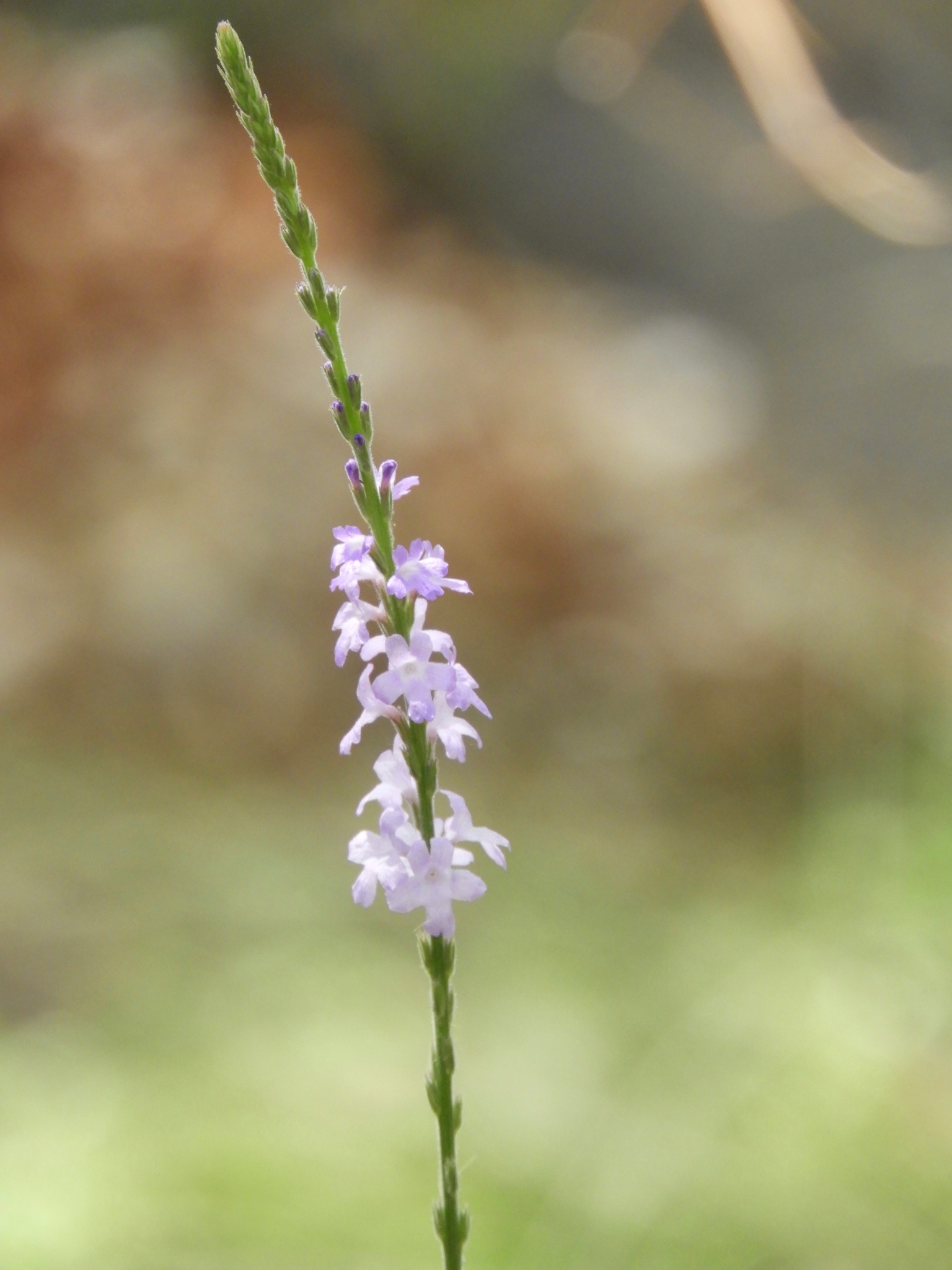
A blue-green patina of algae and wisps of pollen on the surface of the pools draw my gaze. My eyes read the small details, the minute life forms. I sit and breathe in the spaciousness between bird calls high in the canopy, and I listen to the invitation that is already there.
I am so grateful for extended observation like this in Nature, the opportunity to deepen the practice of sacred seeing (Visio Divina), devotion to the source while at the same time volunteering for Sky Island Alliance. I want everyone especially children to have the same opportunities. I want them to know what it is to love the natural world and feel loved back.
When it’s time to go I shuffle my feet. I don’t want to leave. I am as devoted to the Sky Islands of Southeastern Arizona and Mexico as I am devoted to my faith. They are one and the same.

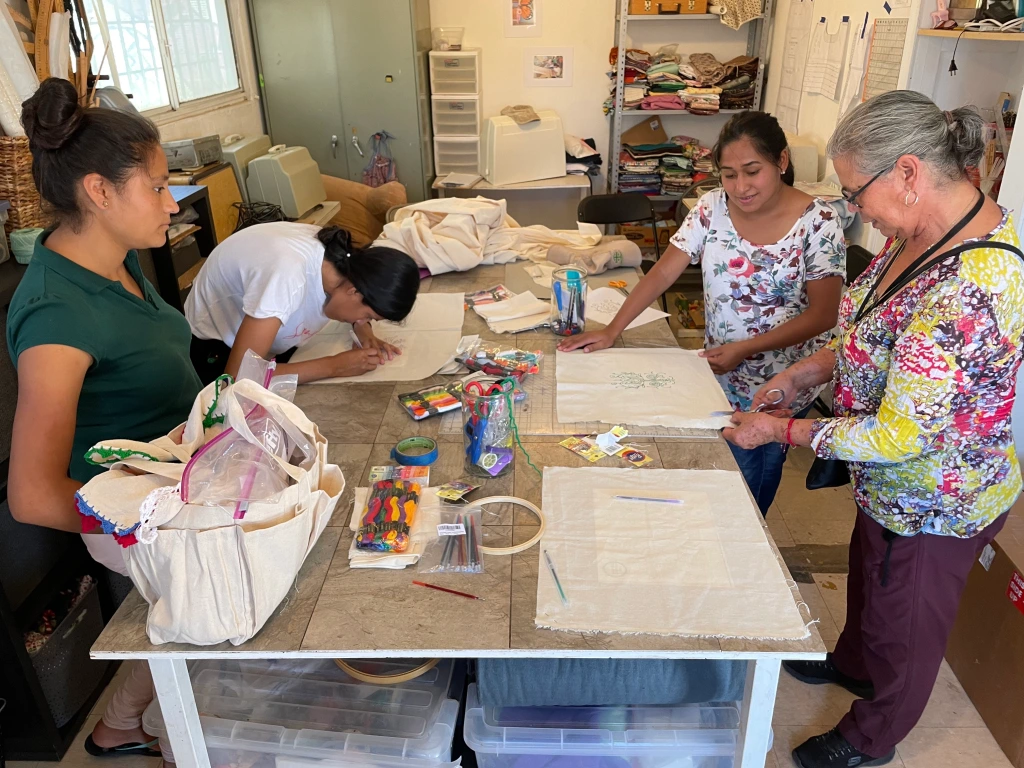
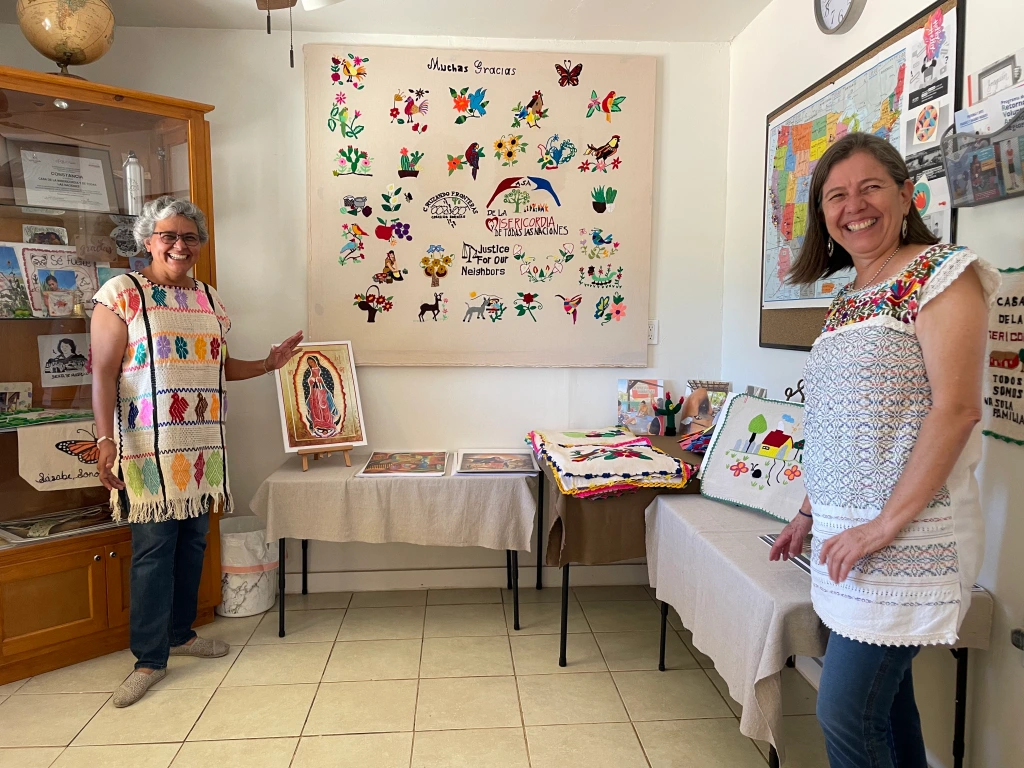




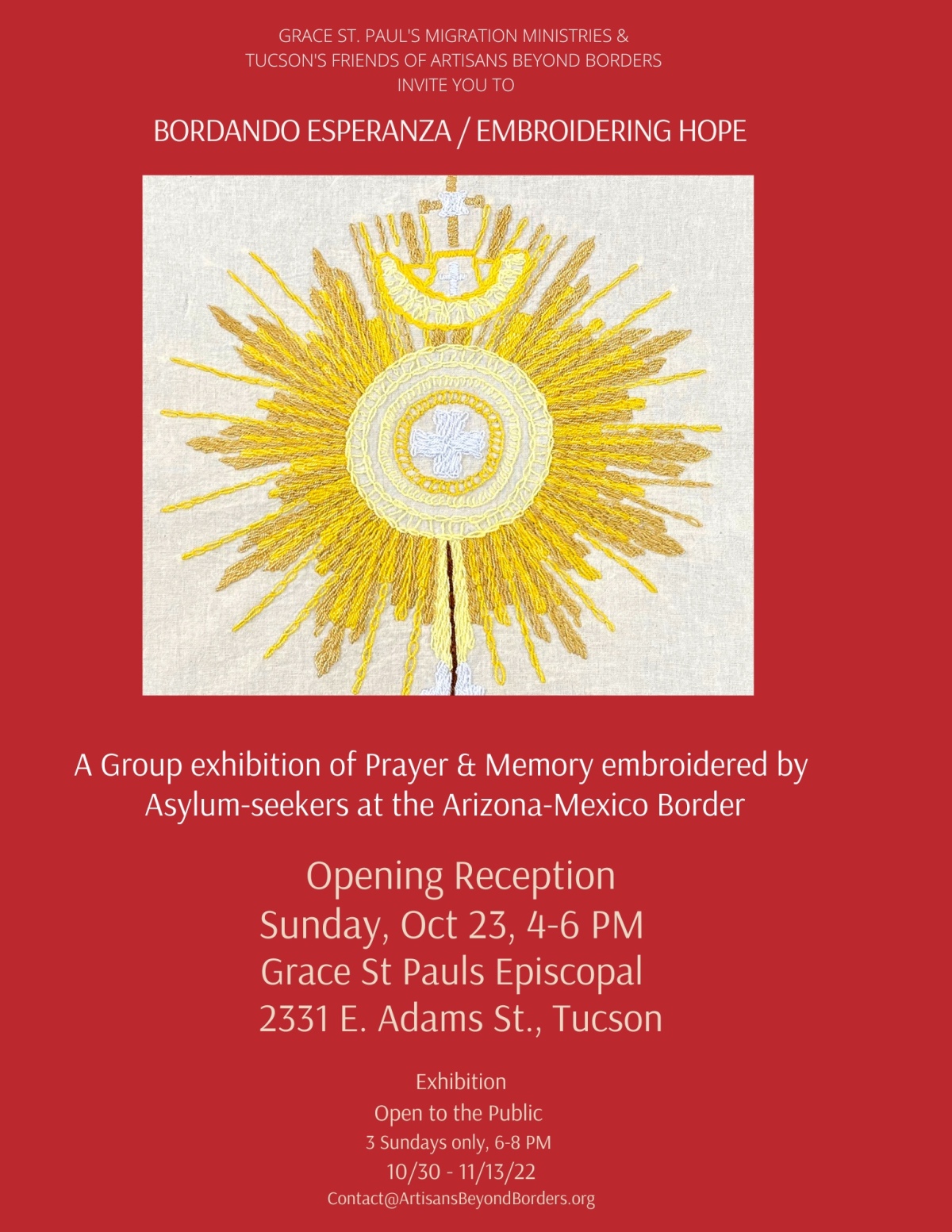
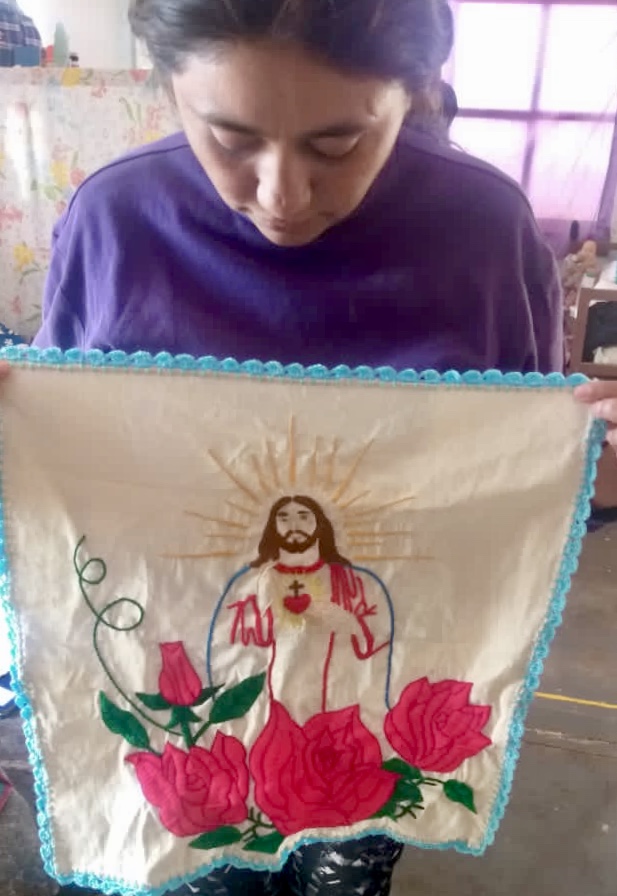


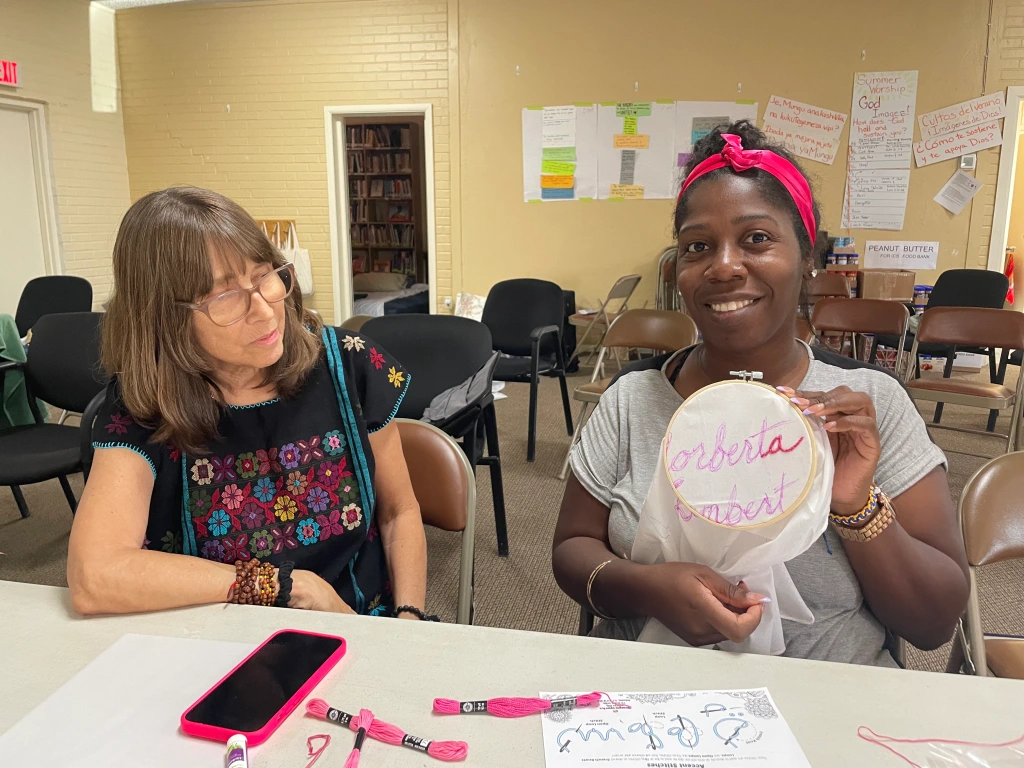



 “We are People not Papers,” Erendida Mancilla, Mexico
“We are People not Papers,” Erendida Mancilla, Mexico






